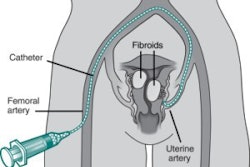Dear AuntMinnie.com Member,
Italian researchers have found they can cut the radiation dose for virtual colonoscopy studies by more than half, while maintaining excellent sensitivity and specificity. The new technique may not detect as many extracolonic abnormalities as standard-dose VC, but could become a valuable tool in screening applications where radiation dose is a concern, according to an article we’re featuring this week in our Virtual Colonoscopy Digital Community.
According to the story by staff editor Eric Barnes, University of Rome La Sapienza researchers screened 158 patients with conventional colonoscopy and the ultralow-dose technique, which used an mAs setting of 10. The ultralow-dose protocol detected all of the carcinomas found by conventional colonoscopy, all polyps larger than 10 mm, and scored 89.1% sensitivity for polyps 6 mm and larger -- a rate that rivals the best results in standard-dose virtual colonoscopy.
Meanwhile, radiation dose was far lower than that typically seen in standard-dose virtual colonoscopy, with a total weighted dose of 2.75 mGy for combined prone and supine acquisitions. The effective doses were 1.8 mSv for men and 2.4 mSv for women.
On the down side, the technique could reduce the number of incidental findings in structures like the liver, pancreas, and lymph nodes, where image noise can interfere. Get the rest of the story at http://vc.auntminnie.com.



















